
HR teams are under increasing pressure to deliver fast, accurate, and compliant support in a changing work environment. Yet many still operate with fragmented systems that make it hard to manage data or drive consistent results. With more complex workforces and growing regulatory demands, these inefficiencies are no longer sustainable.
This shift is driving significant investment in HR technology. The global HR SaaS market is projected to reach $410.86 billion in 2025, growing steadily through 2030. Organizations are turning to unified platforms that enhance key HR functions, such as recruitment, payroll, performance, and compensation, into a single source of truth. These platforms also offer integrations with tools used across finance and operations, helping teams work more efficiently.
In this blog, we explore eight of the top HR SaaS platforms shaping how companies manage people in 2025. Each section outlines core capabilities and provides practical context to help you evaluate which solution fits your business needs best.
HR SaaS (Software as a Service) platforms deliver HR tools via the cloud on a subscription basis. These platforms have expanded to support the full employee lifecycle, from talent acquisition and onboarding to performance tracking, compensation planning, and compliance reporting. In 2025, their value lies in their scalability, data accessibility, and ability to adapt to changing workforce needs.
Key trends driving adoption include:
HR SaaS solutions offer more than operational convenience; they serve as enablers that help HR teams respond more quickly, manage risk more effectively, and improve employee outcomes.
Before diving deeper, it's essential to understand the different categories of HR SaaS platforms available today.
HR SaaS platforms are designed to serve a wide range of functional areas across the employee lifecycle. Categorizing these solutions helps HR leaders identify which types are most aligned with their specific organizational goals.
These systems act as the backbone of HR operations. They manage foundational elements such as employee records, job structures, reporting hierarchies, and administrative workflows. Standard functions include employee data storage, document management, and compliance tracking.
These tools support the attraction, development, and retention of talent. Capabilities typically include applicant tracking systems (ATS), performance reviews, learning management, goal setting, and succession planning. They play a key role in developing internal talent pipelines.
Solutions in this category handle compensation disbursement, tax calculation and filing, benefits enrollment, and compliance with local payroll laws. Many offer employee self-service features for viewing pay statements, updating tax details, and managing benefits selections.
These platforms focus on turning employee data into actionable insights. Dashboards, trend reports, and predictive models help HR teams monitor KPIs such as attrition, engagement, and time-to-hire. Advanced analytics enable data-driven planning and continuous improvement.
HCM (Human Capital Management) suites combine multiple HR functions, such as core HR, talent, payroll, and analytics, into one unified platform. These suites provide end-to-end visibility and are well-suited for mid-sized to large enterprises seeking centralized control and operational consistency.
Understanding the types of HR SaaS platforms sets the foundation for assessing their impact. The following section explores the key benefits of adopting these solutions in practice.
Adopting HR SaaS platforms brings measurable benefits across both day-to-day operations and long-term strategic planning.
With these advantages in mind, it's essential to understand what to prioritize when evaluating an HR SaaS platform. Next, we break down the key features that should guide your selection.
Suggested Reads: 9 Proven Ways to Reduce Employee Turnover
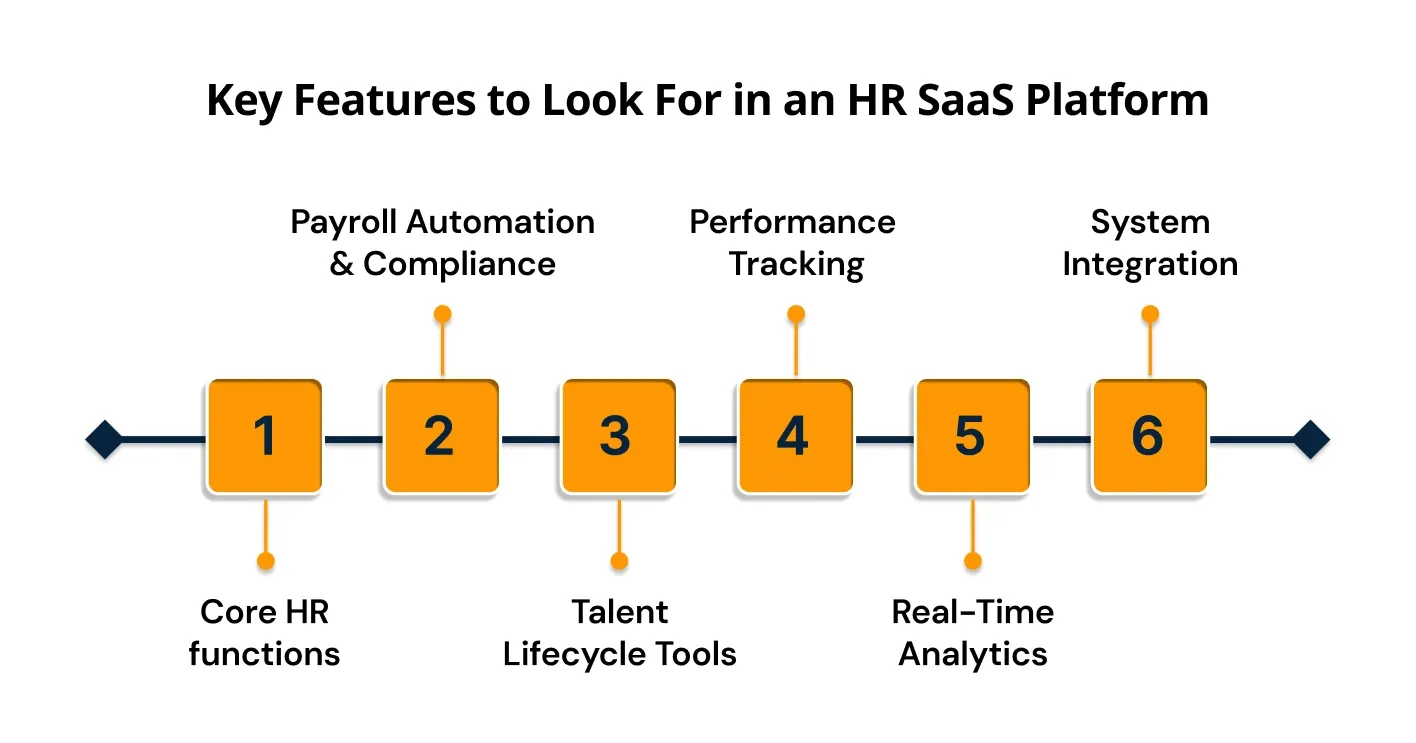
When evaluating platforms, HR teams increasingly focus on features that not only improve administrative efficiency but also provide insights and functionality that support long-term workforce strategy. This includes capabilities that help align HR operations with broader business objectives, ensure compliance, and drive data-informed decision-making.
These are the capabilities that distinguish modern HR software. Let’s now examine top solutions built around these needs.
Nick Howell discusses practical steps and data-driven strategies to address pay equity in today’s evolving compensation landscape. In this 44-minute episode, you'll hear insights on compliance, internal fairness, and how HR leaders can take a structured approach to closing pay gaps. Listen to the full episode to explore how compensation teams are responding to growing expectations around equity and accountability.
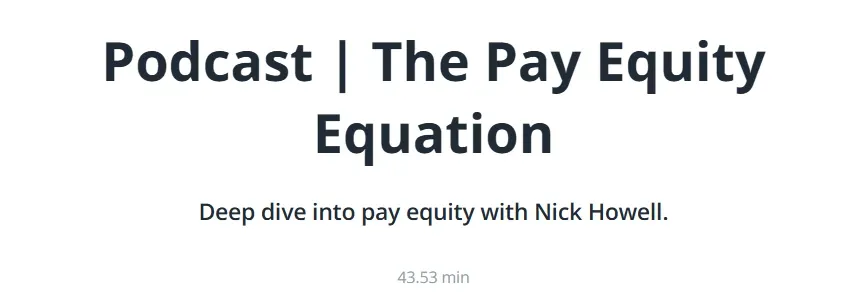
HR leaders today need scalable, integrated solutions to manage key functions across the employee lifecycle. This encompasses areas such as compensation, recruitment, hiring, analytics, and compliance. The right platform depends on company size, structure, and goals.
Below is a list of eight leading HR SaaS platforms for 2025, starting with a compensation-focused solution, followed by tools with broader HR capabilities.
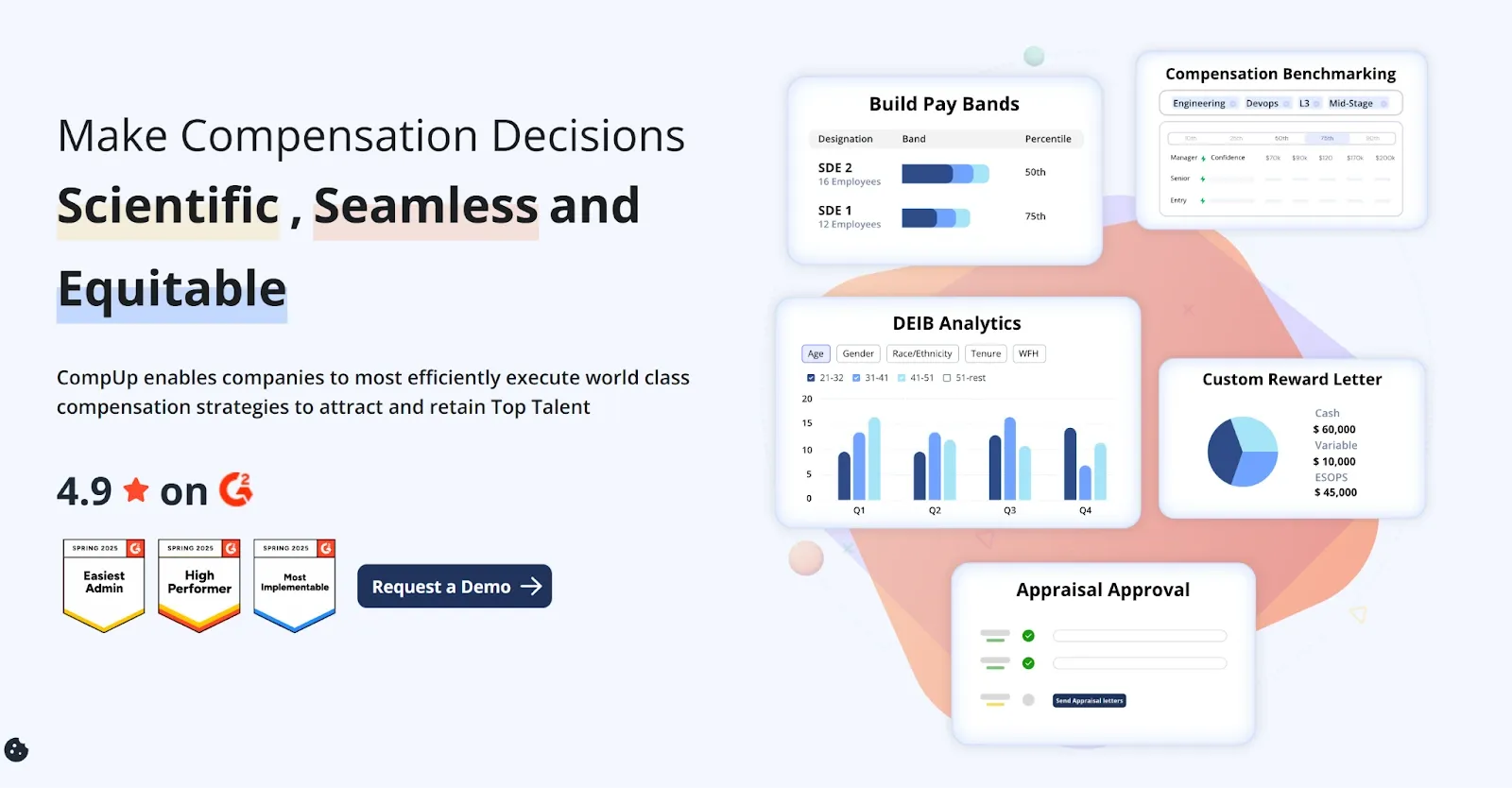
CompUp delivers a purpose-built HR SaaS platform centered on compensation management. It supports HR leaders in aligning compensation strategies with company goals by providing tools that enhance pay equity, planning accuracy, and data visibility. The platform supports a structured approach to rewards, allowing informed decisions across the employee lifecycle.
Core Strengths
Best For
Mid-size to enterprise-level organizations seeking to operationalize compensation governance while aligning with performance goals and equity standards.
Why Consider It in 2025
In a market where compensation accuracy and transparency are increasingly under scrutiny, CompUp offers a comprehensive platform that links performance metrics with pay decisions, supports compliance efforts, and provides real-time planning capabilities. Its built-in tools make it easier to address pay equity with data-backed strategies and transparency.
Suggested Reads: What is a Performance Management System? Elements and Benefits
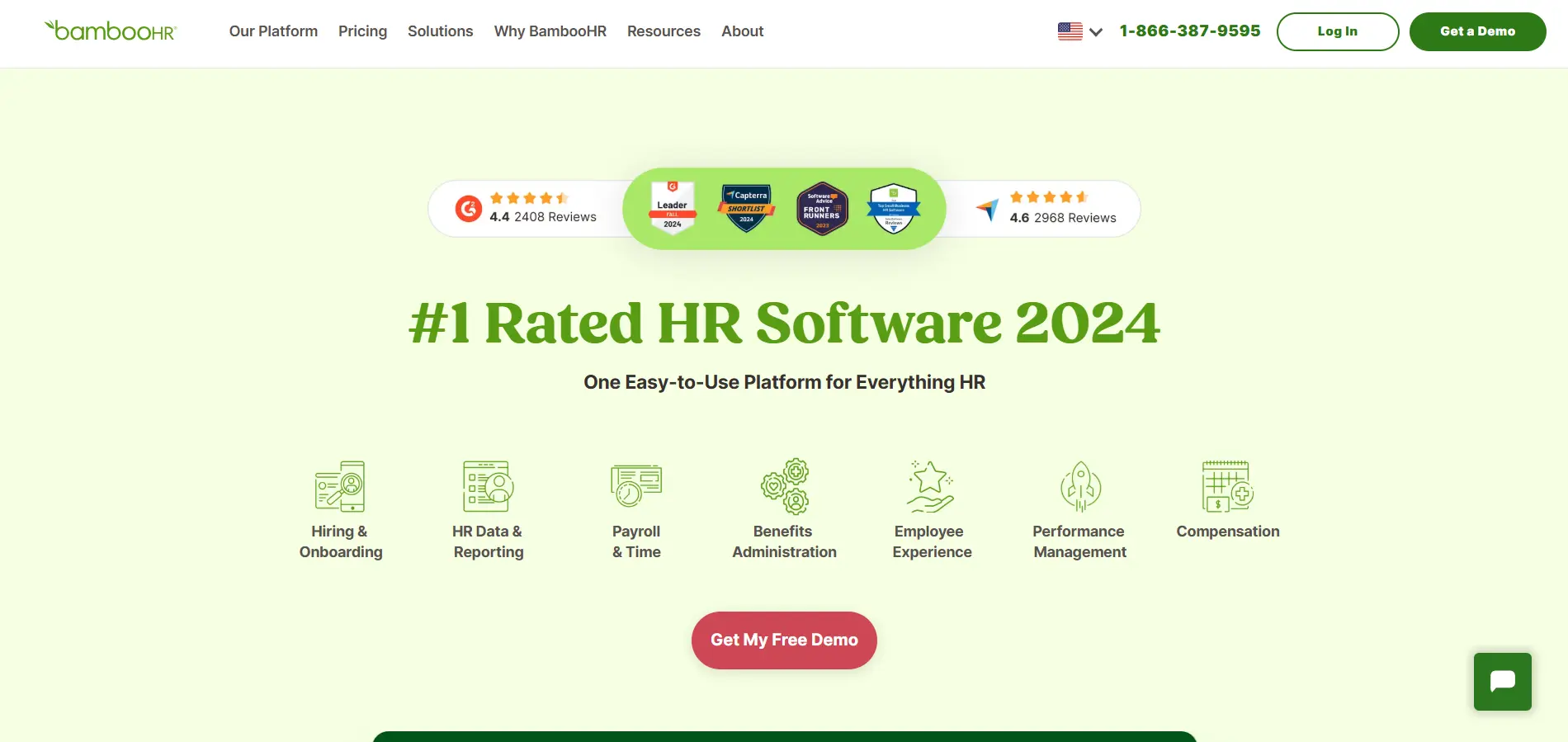
BambooHR is a cloud-based HR software tailored to small and medium-sized businesses. It focuses on the main HR functions with an interface that supports ease of use and straightforward navigation.
Core Strengths
Best For
Organizations with lean HR teams that need essential functionality without extensive customization or integrations.
Why Consider It in 2025
For businesses prioritizing usability and a short implementation timeline, BambooHR offers a focused set of features suited to foundational HR management.
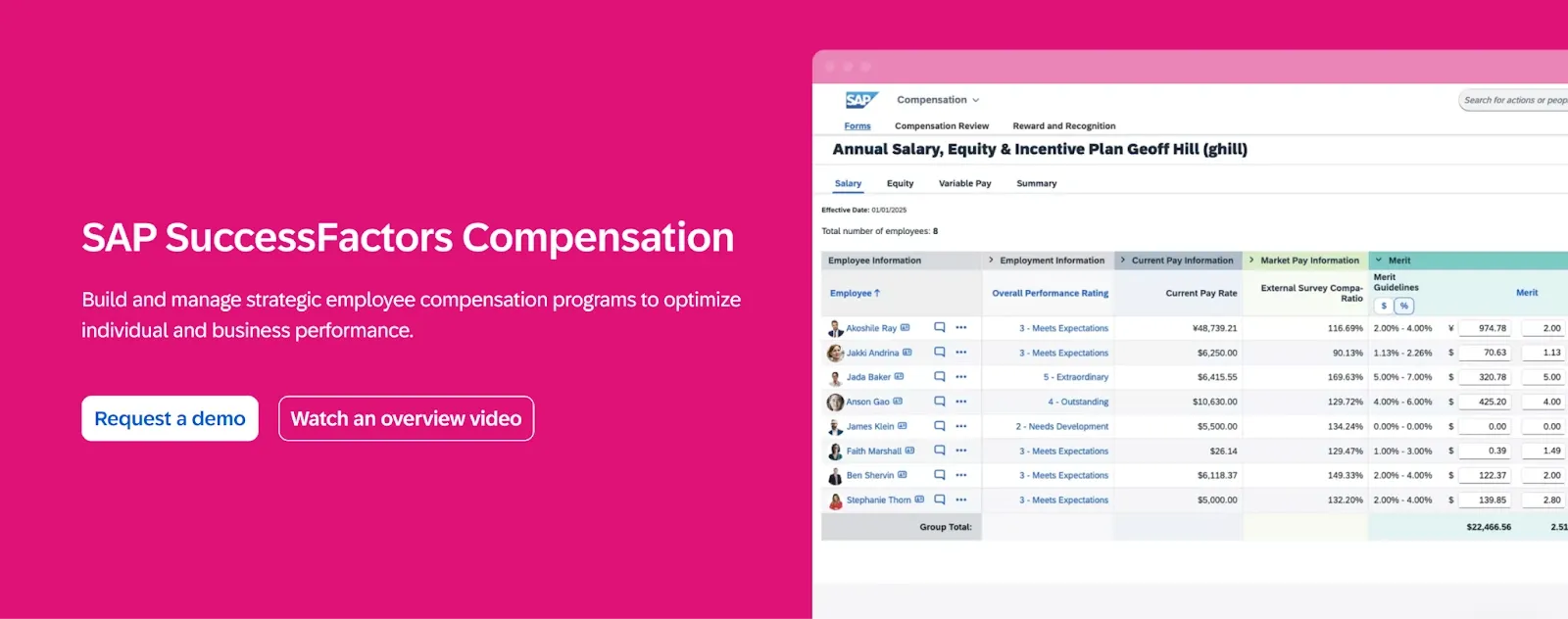
SAP SuccessFactors is an enterprise-focused HCM suite designed to manage large-scale HR functions. It offers a broad range of tools for handling areas such as hiring, learning, performance, and succession planning.
Core Strengths
Best For
Organizations operating across multiple regions that need extensive configurability and compliance support.
Why Consider It in 2025
SuccessFactors may be a suitable solution for enterprises seeking to standardize HR processes across global teams and requiring advanced reporting and modular flexibility.
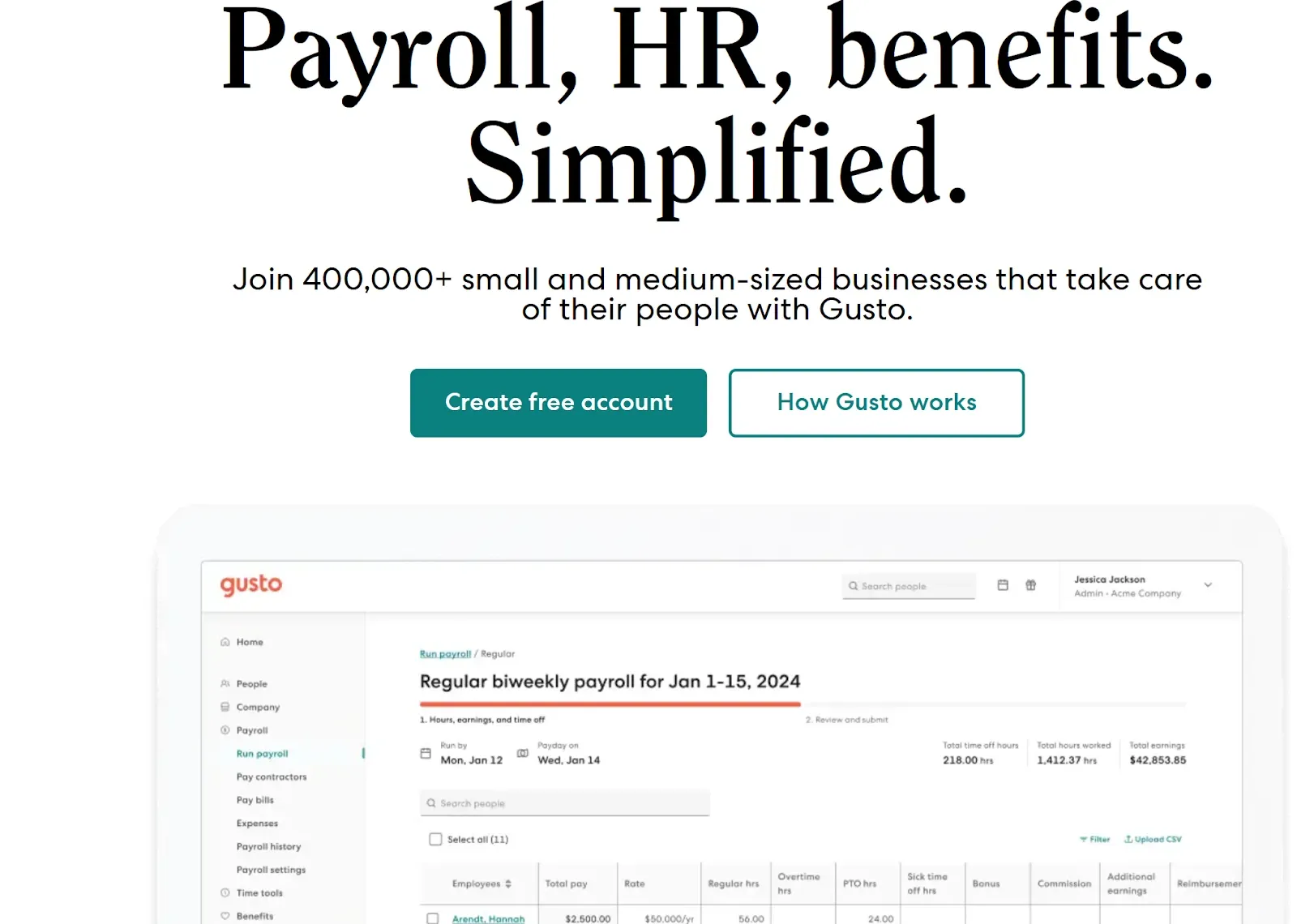
Gusto offers a cloud-based solution that brings together payroll, benefits, and basic compliance tools. It is built primarily to serve the needs of small businesses and early-stage companies.
Core Strengths
Best For
Startups and small teams seeking a straightforward HR and payroll platform without extensive configuration needs.
Why Consider It in 2025
For organizations looking to manage payroll and compliance efficiently from the outset, Gusto provides a manageable solution with essential HR features.
Suggested Reads: Understanding Pay Grade Structures and Salary Ranges
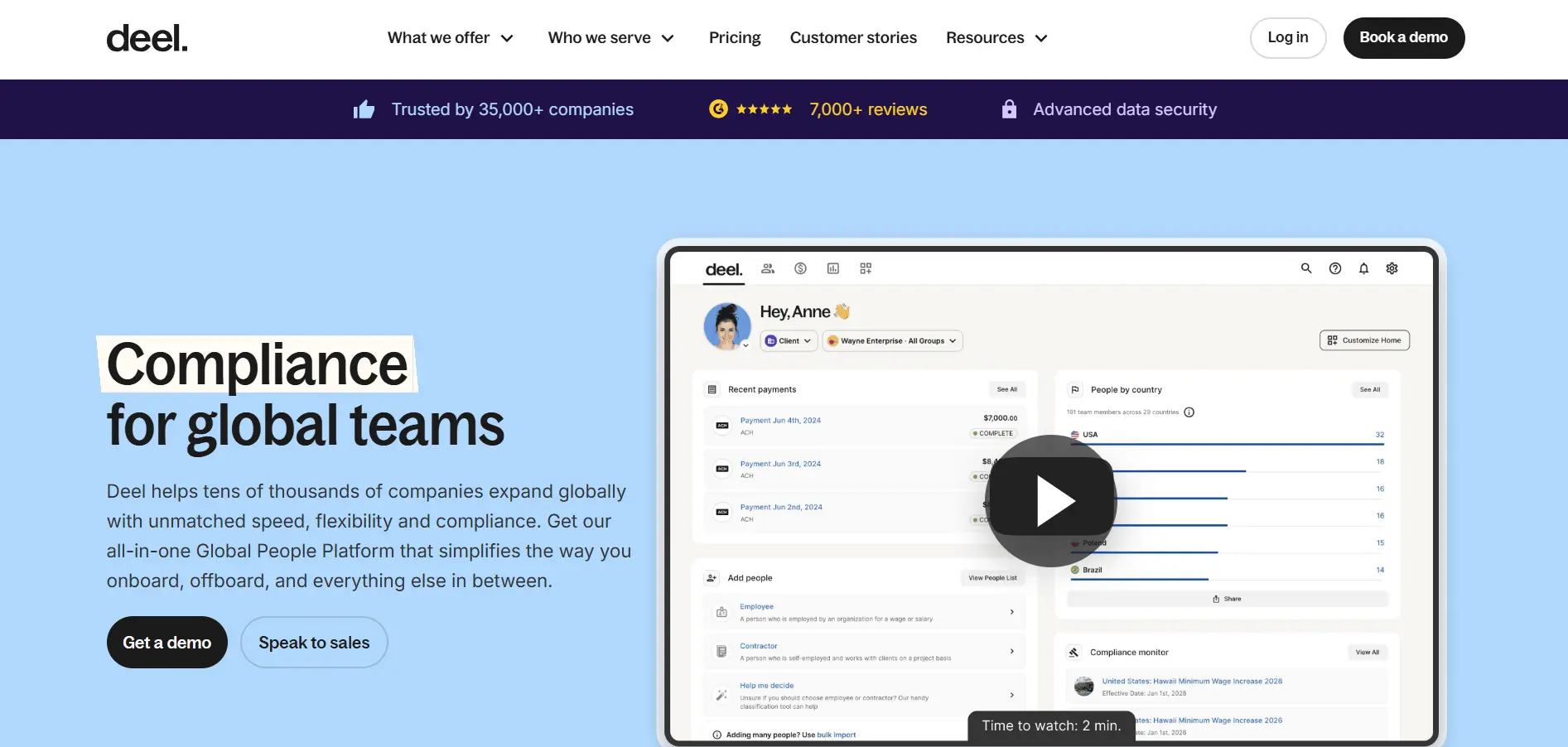
Deel provides payroll and compliance functionality to help businesses manage international hiring and payments. Its focus is on improving workforce processes for organizations that operate across multiple countries.
Core Strengths
Best For
Organizations expanding globally that require operational support without local legal entities.
Why Consider It in 2025
Deel may be a suitable choice for managing distributed teams, ensuring compliance, and minimizing the overhead associated with international employment.
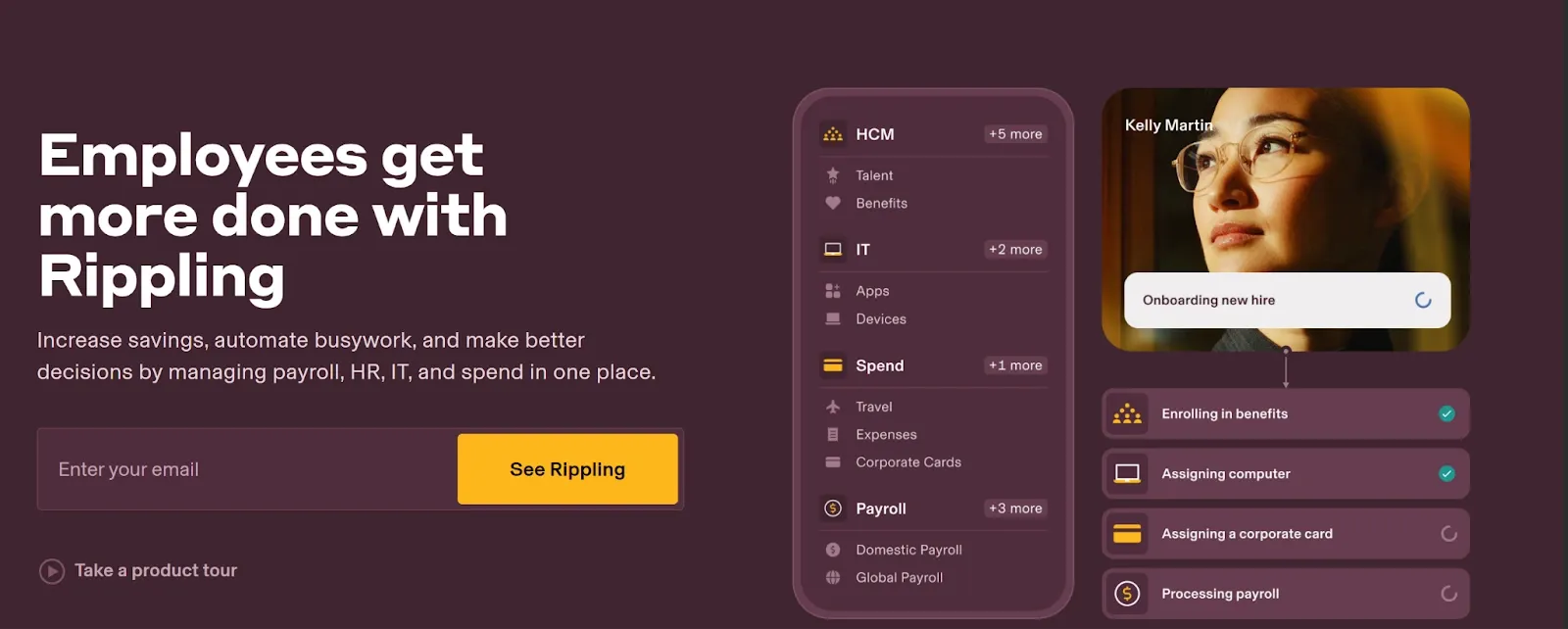
Rippling offers a centralized solution that brings HR, IT, and finance operations into a single platform. It allows automation of key employee processes across functions, from onboarding through exit procedures.
Core Strengths
Best For
Companies aiming to manage employee operations across departments with fewer manual steps.
Why Consider It in 2025
Rippling may help reduce operational inefficiencies by connecting disparate systems and enabling end-to-end task automation across HR and IT.
Suggested Reads: 9 Proven Ways to Reduce Employee Turnover
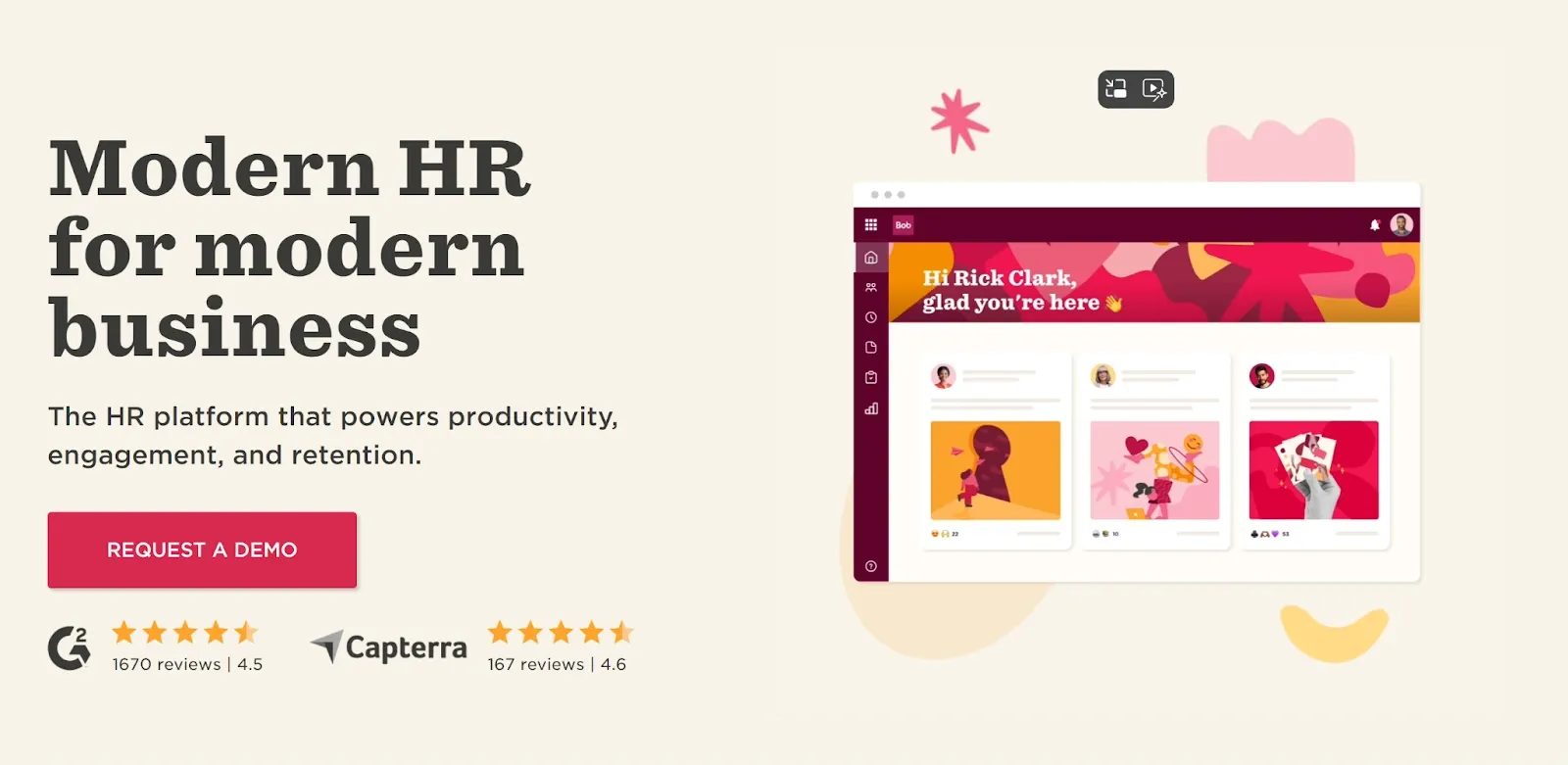
HiBob is an HR platform built to address the needs of mid-sized and scaling organizations. It combines people management, performance tracking, and organisational planning in a single interface. The platform is designed to give HR teams a clearer understanding of employee trends and operational alignment.
Core Strengths
Best For
Mid-size companies that prioritise structured people management and internal communication.
Why Consider It in 2025
HiBob provides a consolidated view of employee data with tools aimed at improving visibility across HR functions.
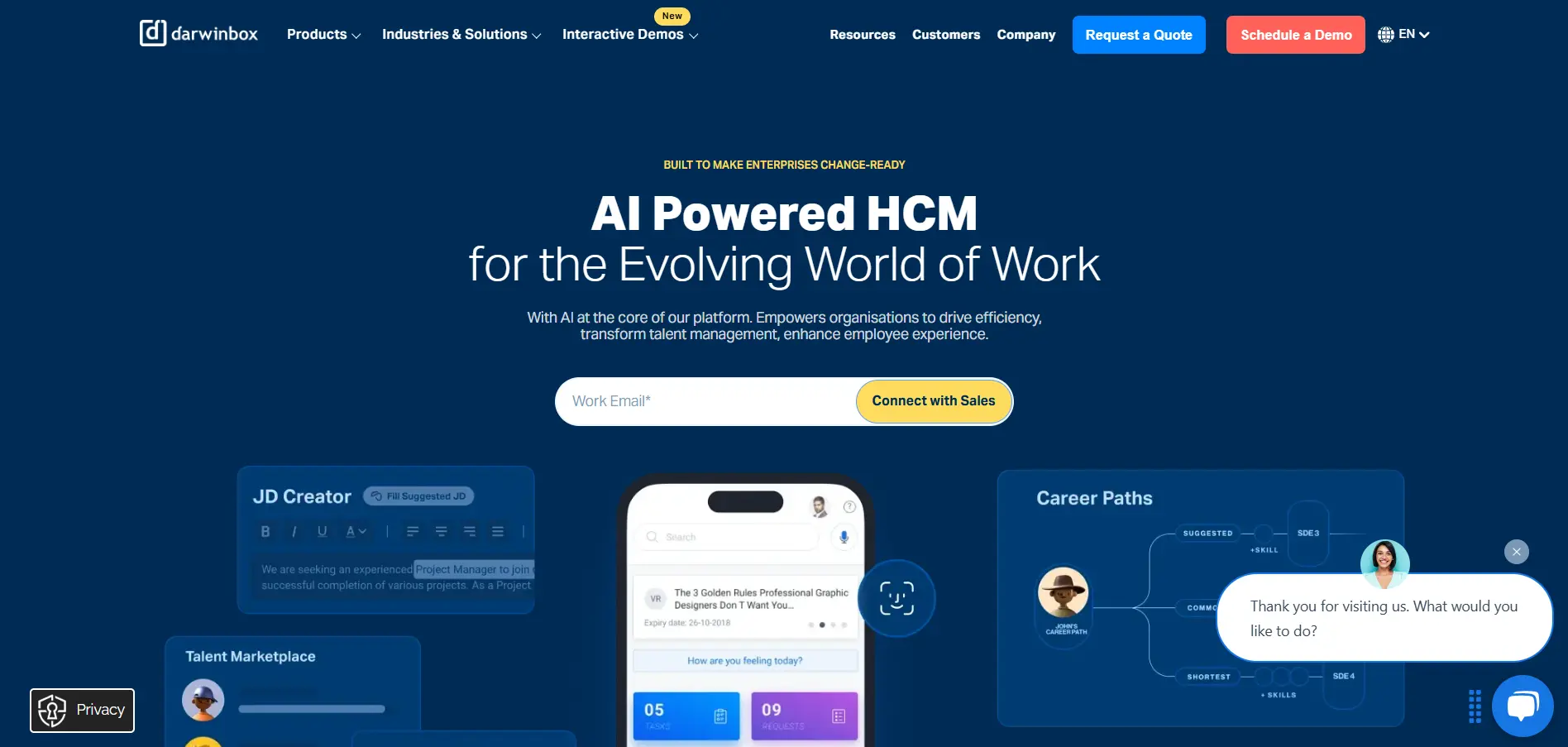
Darwinbox is a cloud-based HCM system that serves organizations across India, Southeast Asia, and the Middle East. Its modular design enables HR teams to manage core functions such as payroll, performance, and employee onboarding.
Core Strengths
Best For
Mid-sized and large companies with operational footprints in Asia and the Middle East.
Why Consider It in 2025
Darwinbox offers configuration flexibility and regional compliance coverage, making it useful for companies with geographically diverse teams.
Next, we’ll compare these platforms side-by-side to help clarify your evaluation.
The following table presents a quick view of how each HR SaaS platform compares across core features. It highlights differences in functionality, scale suitability, and unique strengths to help you assess alignment with your requirements.
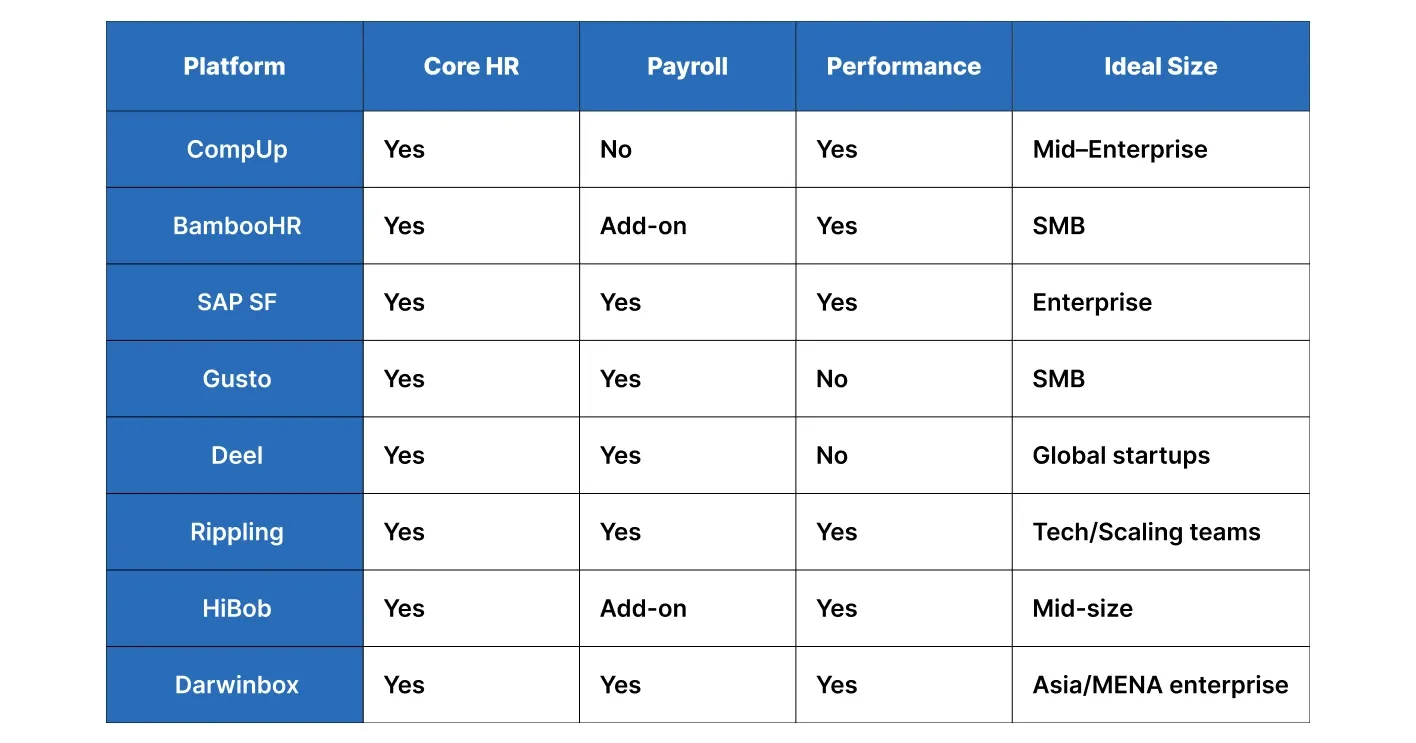
In the following section, we outline practical steps to help you identify the most suitable platform for your organizational needs.
Finding the right HR SaaS platform involves more than comparing features. It requires a structured evaluation based on your team’s priorities, tech environment, and regional requirements.
1. Review Your Current HR Systems
Begin by mapping your existing HR tools, including HRIS, payroll, and performance management software. This helps you identify gaps and assess if a new platform will integrate easily with your current setup.
2. Define the Maturity of Your HR Function
Determine the complexity of your HR operations:
3. Evaluate Practical Considerations
Look beyond core features to assess long-term suitability:
4. Test with Stakeholders
Use demos and trial phases to explore the interface and gather feedback from managers and users. This helps uncover any usability issues before full rollout.
Next, we examine how CompUp enables HR teams to streamline operations, maintain flexibility, and scale effectively in response to evolving workforce requirements.
Choosing the right HR SaaS solution requires a platform that strikes a balance between scale, usability, and actionable insights. CompUp offers a unified approach to modern compensation challenges through the following core features:
Together, these capabilities help HR teams manage compensation strategies more clearly and efficiently.
In 2025, businesses are looking beyond basic HR tools. They require platforms that deliver actionable insights, promote fairness, and integrate smoothly with their existing HR ecosystems. As workforce expectations evolve, the demand for data-driven, adaptable HR solutions continues to increase.
CompUp stands out by offering capabilities that align with these modern requirements, covering compensation planning, pay equity, and real-time benchmarking. These features enable HR teams to design fair, transparent, and competitive compensation frameworks that support long-term business growth.
Tools like Rewards Statement give employees clear visibility into their total earnings, while Pay Equity audit ensures fairness across roles and geographies, making CompUp not just compliant but truly people-centric.
Looking for a comprehensive compensation management solution? CompUp offers customizable pay bands, advanced pay equity tools, and easy integration with your existing systems. Schedule your free demo today.
1. How do HR SaaS platforms ensure data privacy and compliance?
Most leading platforms follow regional compliance regulations such as GDPR or SOC 2 and use encryption, audit trails, and user permissions to protect employee data.
2. Can a company use multiple HR tools instead of one all-in-one platform?
Yes, many organizations integrate specialized tools for payroll, performance, or compensation via APIs or middleware if the primary system lacks certain features.
3. What is the typical onboarding time for an HR SaaS platform?
Onboarding timelines vary. Simpler tools like BambooHR or Gusto can take 2–4 weeks, while enterprise solutions like SuccessFactors may require several months.
4. Do these platforms support compensation benchmarking?
Some platforms, like CompUp, offer integrated market benchmarking. Others may require third-party tools or manual data import.
5. How often should companies re-evaluate their HR SaaS solutions?
Best practice is to conduct a review every 18–24 months or after major organizational changes such as mergers, expansions, or new compliance obligations.
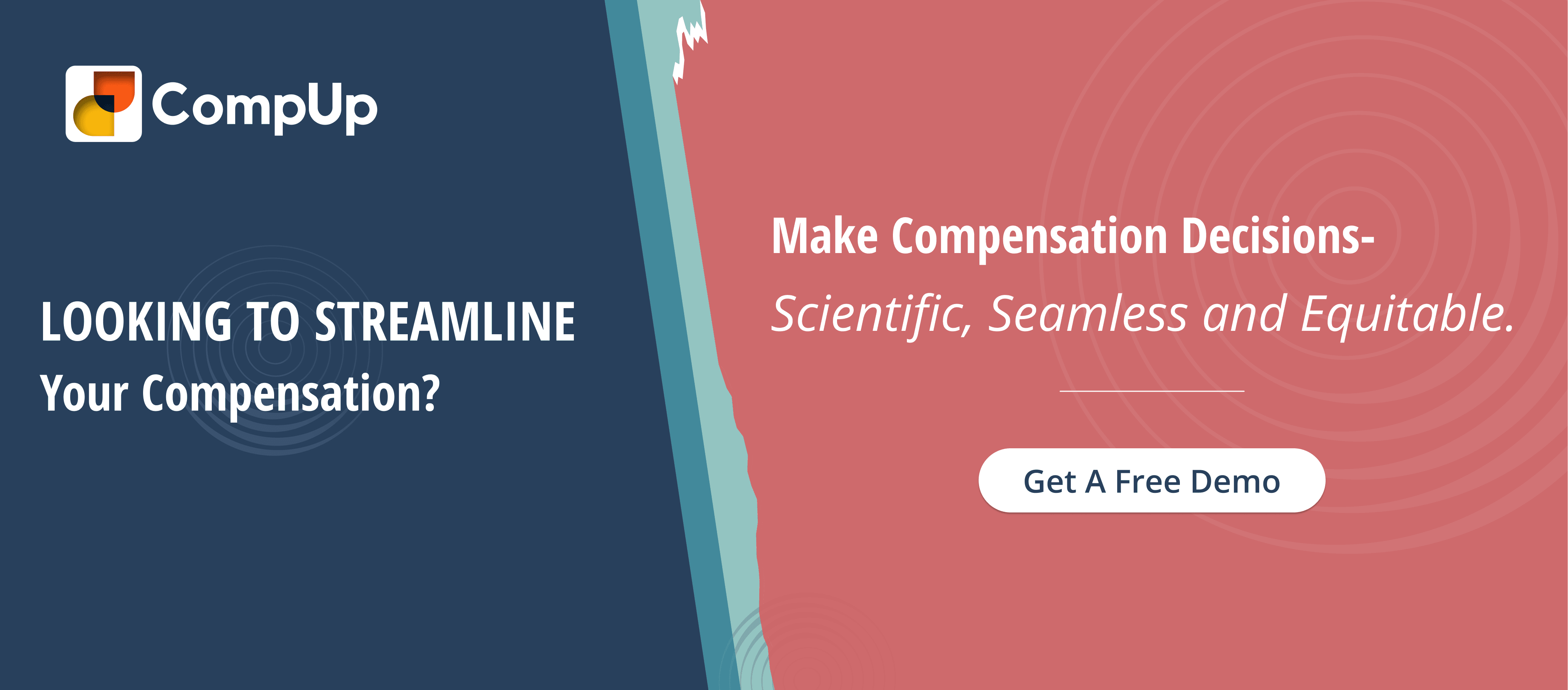
Co-founder & Head of Product
Anshul Mishra, Co-founder and Head of Product at CompUp, blends technology and total rewards to create smart, user-friendly solutions. He focuses on building data-driven tools that help companies design fair and effective compensation strategies, making complex processes simpler and more impactful.
Revolutionizing Pay Strategies: Don't Miss Our Latest Blogs on Compensation Benchmarking